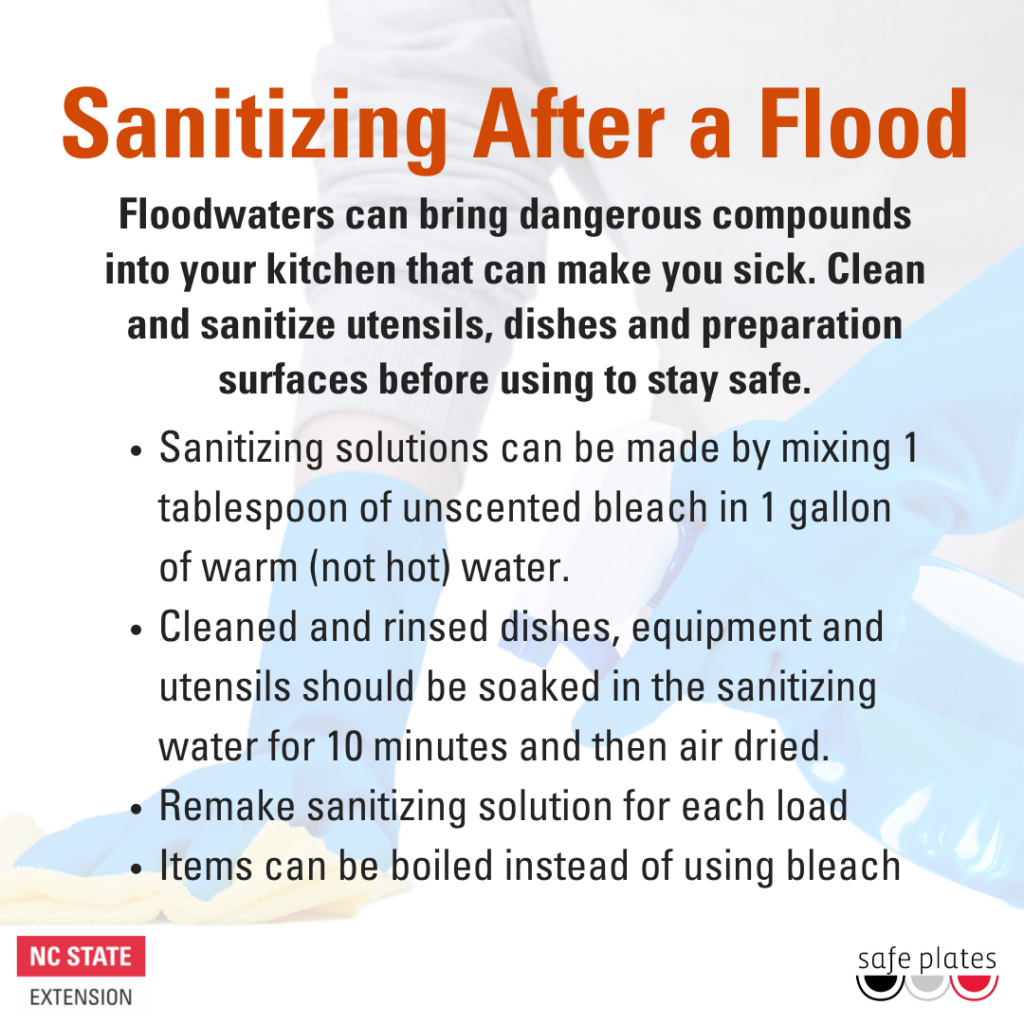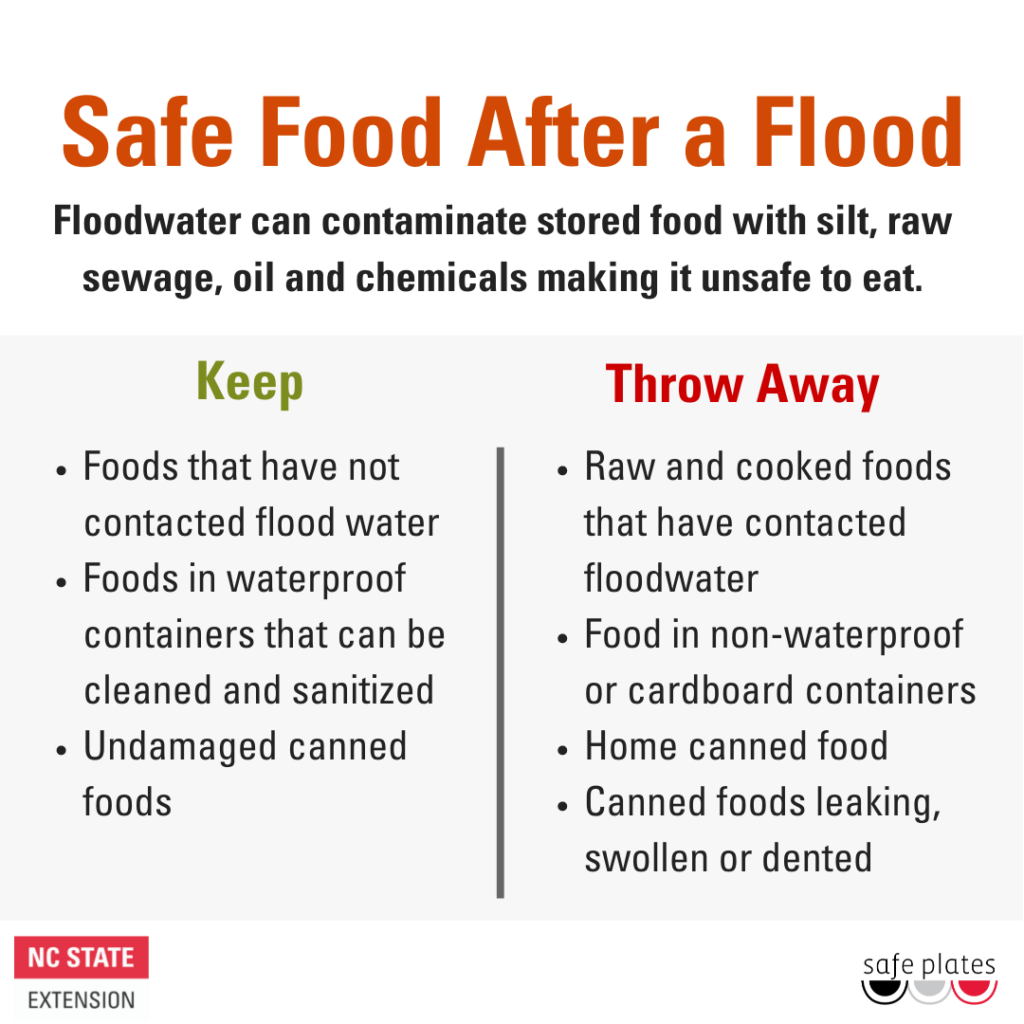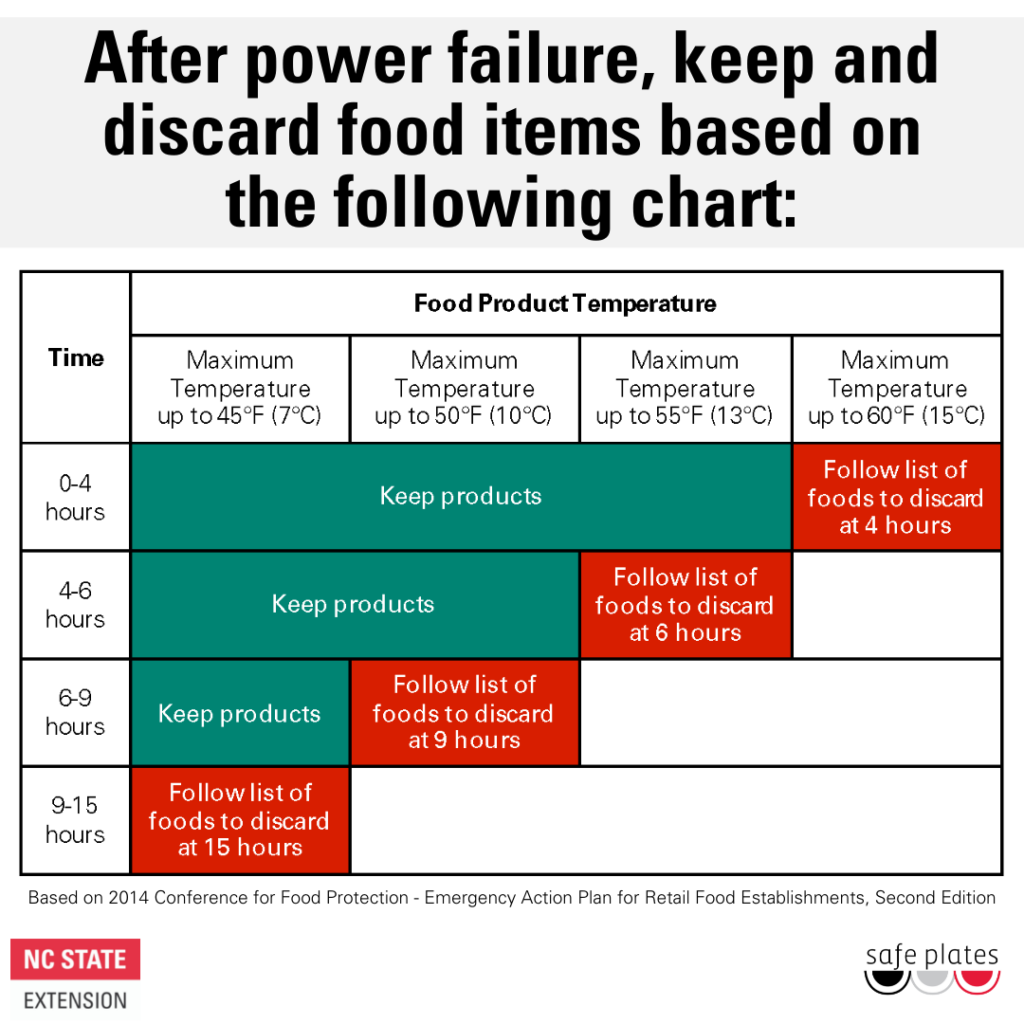Food Safety During Emergencies: What You Need to Know
go.ncsu.edu/readext?1081117
en Español / em Português
El inglés es el idioma de control de esta página. En la medida en que haya algún conflicto entre la traducción al inglés y la traducción, el inglés prevalece.
Al hacer clic en el enlace de traducción se activa un servicio de traducción gratuito para convertir la página al español. Al igual que con cualquier traducción por Internet, la conversión no es sensible al contexto y puede que no traduzca el texto en su significado original. NC State Extension no garantiza la exactitud del texto traducido. Por favor, tenga en cuenta que algunas aplicaciones y/o servicios pueden no funcionar como se espera cuando se traducen.
Português
Inglês é o idioma de controle desta página. Na medida que haja algum conflito entre o texto original em Inglês e a tradução, o Inglês prevalece.
Ao clicar no link de tradução, um serviço gratuito de tradução será ativado para converter a página para o Português. Como em qualquer tradução pela internet, a conversão não é sensivel ao contexto e pode não ocorrer a tradução para o significado orginal. O serviço de Extensão da Carolina do Norte (NC State Extension) não garante a exatidão do texto traduzido. Por favor, observe que algumas funções ou serviços podem não funcionar como esperado após a tradução.
English
English is the controlling language of this page. To the extent there is any conflict between the English text and the translation, English controls.
Clicking on the translation link activates a free translation service to convert the page to Spanish. As with any Internet translation, the conversion is not context-sensitive and may not translate the text to its original meaning. NC State Extension does not guarantee the accuracy of the translated text. Please note that some applications and/or services may not function as expected when translated.
Collapse ▲When natural disasters like floods and power outages strike, staying safe goes beyond shelter and electricity—your food supply can quickly become a hidden danger. Loss of refrigeration, exposure to contaminated floodwater, and limited access to clean water all increase the risk of foodborne illness. In emergency situations, knowing how to properly store, handle, and assess food can make the difference between staying healthy and getting seriously sick. This article contains resources that provide food safety information for power outages and flooding.
Before a Power Outage:
- Purchase/ locate thermometers for your fridge and freezer as well as a tip sensitive thermometer for checking the internal temperatures of food
- Purchase foods that are shelf stable and can be eaten cold or heated on a grill outside.
- Keep extra water on hand in case of a Boil Water Advisory.
After a Power Outage:
- Open and use only the food you need if you do not have access to refrigeration.
- Foods that have been kept below 41°F are safe to eat or be refrozen. (Refreezing these items could affect the quality.)
- Produce like fresh fruit and leafy greens that have been cut should be eaten within 4 hours or discarded.
- NEVER use outdoor grills or cooking equipment inside your home.
- Heat foods to the following internal temperatures per Safe Plates guidelines:
- Eggs, whole meats, fish: 145°F
- Ground meats, fish: 155°F
- Whole and ground poultry: 165°F
Sanitizing Solution:
Flood waters may be contaminated and contain dangerous bacteria or chemicals that can make you sick. Be sure to clean and sanitize dishes, utensils, and any food contact surfaces before using after a flood.

It’s also recommended to discard any raw and cooked foods that have come into contact with flood waters, as well as foods in cardboard or non-waterproof containers, home-canned food, or canned foods that are leaking, swollen, or dented.

Resources:
Below are resources to keep on hand for power outages, floods, or disaster preparedness or recovery.
English:
- Disaster Preparedness and Recovery
- Food Safety Considerations After a Flood
- Safe Food After a Flood
- Garden Recovery After a Flood
- Preparing for a Power Outage
- Meal Prep After a Power Outage
- Foods to Keep and Discard After a Power Outage
- Infant Food Safety During a Power Outage
Spanish:
- Alimentos Inocuos Después de una Inundación
- Para Limpiar la Cocina Después de una Inundación
- Para Recuperarse de una Inundación: Inundación de Jardines
- Cómo Prepararse para un Apagón
- Preparación e Inocuidad de los Alimentos Durante un Apagón
- Alimentos que Conservar y Desechar Después de un Apagón
- Inocuidad de los Alimentos Infantiles Durante un Apagón





